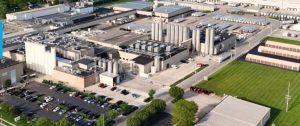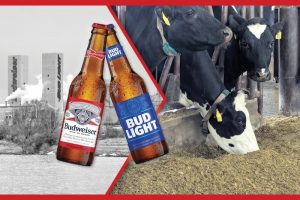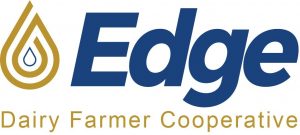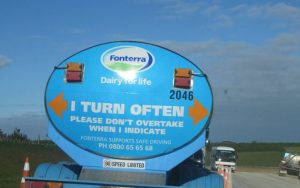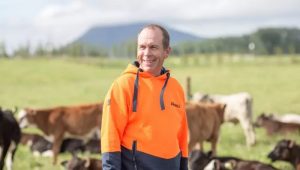
“It’s so long ago nobody remembers,” chuckles Dan Loper, Sr. He’s now 82 and still goes to work every day as a dairy nutritionist. With his son Danny, he runs Loper Systems in Clovis, New Mexico.
Loper was born on the kitchen table in his family’s farmhouse in the Town of Roxbury, near Sauk City in 1939. Later in his childhood, the Loper family moved to another family farm with a stone farmhouse in Marxville, a few miles away. He grew up farming and studying.
“I was the valedictorian of my eighth grade class. There were two boys in my class,” he added with a smile.
He remembers playing basketball for Mazomanie High School and then working for the state’s forerunner of the Department of Natural Resources. He did that for a year to earn some money before going to Iowa State at the age of 19.
There Loper studied animal science and business and then got a Masters Degree in ruminant nutrition at the University of Kentucky. He went on to earn his PhD in nutritional biochemistry at Kansas State.
He joined the Air Force to serve his ROTC commission and was tapped for a position with the Gemini and then the Apollo, space programs – studying what kind of nutrition the astronauts needed.
“I served three years in the Air Force School of Aerospace Medicine in San Antonio as a post doc,” he said. Their ideas were shuttled to Houston to tell administrators of the space program what would work – and what wouldn’t.
After working with the astronauts, he went to the West Coast to get back into animal nutrition. While working for a feed company in the Imperial Valley of California he visited a beef feedlot where he saw a “mixer box” on a truck delivering feed to 10,000 head of feedlot cattle.
At that time most dairy farms were smaller than they are today and were fed a grain concentrate and hay – nearly all the feedstuffs for the cow were delivered individually. For dairy farms, the grain companies formulated concentrate mixes to balance out the nutrients in the on-farm hay crops. When he saw the feedlot cattle getting fed from the mixer, a light bulb went on for him and he wondered why no one fed dairy cattle that way.
“I soon became an enemy of the grain companies,” he said. “The grain companies didn’t tell the dairymen what was in those grain mixes and most didn’t know.”
But Loper could visualize a future where dairy farmers bought their own grain and other feed ingredients and mixed it up themselves. By buying the lowest cost ingredients they could potentially save a lot of money. This, he could tell, would be especially true as the dairy herds he worked with got larger and larger.
This Loper brainstorm took place in Chino, California about 1974. During the 1970s and 1980s, he led the charge to bring about this major change in feeding dairy cows.
He got the word out to dairy producers by putting on seminars to talk about his idea. The seminars attracted the few makers of “mixer boxes”.
“The national sales managers parked their units in the parking lots outside the seminars so people could look at them,” he said.
To say the grain companies were not happy with him would be an understatement. “It was all out war. I got death threats. The windows were shot out of my office. I carried a gun under my seat and one in the office. I watched who was around me on the freeway.”
The grain companies sensed that his idea was a threat to their exclusive hold on dairy farm rations and they were likely right. Loper relates that of the grain companies that were in business when he started, only two of the 10 survived.
For several years the trouble he got from disgruntled grain companies was “ferocious” as he described it. “By about 1978, ‘79 or ‘80 they pretty much gave up. My motto was ‘have gun will travel’. There just was nobody else doing what I was doing at that time.”
Loper Systems
He started Loper Systems by gathering a group of like-minded PhD’s in animal nutrition. Their group had dairy clients from Kansas City to the Pacific. He found novel ways to tell the world about his ideas for dairy nutrition.
He made a deal with a leading dairy magazine to write an article every month, which he did for more than four years. In return he got an ad in every edition and his photo accompanied each column and was prominently displayed in all the advertisements. “I was called the ‘bearded wonder’,” he says.
His advertising asked dairy farmers “do you know what’s in your feed?”
“The more the grain companies complained about me, the more farmers flocked to the ideas I had,” he says. When he helped dairy producers in Arizona win top DHIA production awards – taking the awards away from traditional winners – a whole new group of dairy producers were won over.
Today, most dairy producers would find it hard to conceive of feeding their cows without using a total mixed ration system (TMR). It is estimated that about 90 percent of dairy farmers use TMR in some form or another. They, or their dairy nutritionists, sample various feedstuffs and balance a ration for the amounts of protein, energy, fiber and other feed ingredients that the cows need.
Back when Loper began doing it, the “mixer boxes” could not handle hay – only silage and grain – and there were no computers to help him cipher out the ration.
“We did it all by hand, without computers, until 1981,” he said. “We didn’t even have fax machines yet.”
He recalls making a huge swing traveling to his dairy farm clients in those early years, then getting home and having to calculate all those rations by hand and get the information back to the farmers.
When he began, there were only three makers of mixer boxes, but as the idea caught fire “then everybody that could bend iron was getting into making mixers,” he said. “It evolved.”
Becoming successful
Even after Loper and his cadre of PhDs had been in business for a few years, some in the industry were still predicting the demise of their business. His response was to sell his Pontiac and lease a Cadillac Coupe De Ville and get personalized “D Loper” license plates. (At one time he had colleagues with vehicles that had personalized license plates under Loper 1 through 6 and they were all Cadillacs).
Then, when he’d pull into a farm he’d hear “I didn’t think you’d be around this long” from the farmers he was trying to win over. It usually worked.
“This was California where everyone is status conscious. They look at your shoes, your clothes, your wristwatch and they definitely looked at your vehicle,” he recalled.
His business cards have always been black with silver printing on them, with the inscription “Loper Systems. Dairy Nutrition.”
“We looked successful and then we became successful,” he adds. “And I’m just a little old country boy from Marxville, Wisconsin. Maybe it’s that German and Wisconsin work ethic.”
He ran his business out the Chino and Corona, California area for 24 years. In 1993 he moved to Dublin, Texas to supervise his own dairy farms. In 1989, Loper had begun making his own foray into dairy farming – after all, he knew how to feed cows.
He assembled a group of Holsteins on a farm 25 miles south of Albuquerque and soon had three other farms in west Texas. In all, the four farms totaled 3,700 cows. His business plan was to “put a good cow man on each dairy.” After some of his partners bought him out of several of the farms, he was left with two of the dairies near Dublin, Texas and he moved there to supervise them.
Eventually he built a whole new dairy facility and consolidated his two herds there but problems began immediately.
“It was a brand new dairy and we just couldn’t get any milk,” he recalls. By the time they realized that stray voltage was the problem “it was too far gone. I lost a million a year for five years.”
His dairy business went out on the last round of the CWT (Cooperatives Working Together) program – the one sponsored by National Milk Producers Federation to take cows out of production and slaughter them. The payments he got allowed him to pay off everybody he owed money to and then pay Uncle Sam.
His only regret is wishing he’d put his money into California real estate back then rather than a dairy farm.
Son joins Dad
Loper said he did everything he could to discourage his son from joining his business.
“He didn’t want to be a doctor or a lawyer even though he’s smart enough to be either one. He wanted to join me in my business,” he said.
Danny Loper (Jr.) has been working with his dad at Loper Systems for 12 years and has seen his dad train a lot of dairy nutritionists and help a lot of dairy farmers. Clients have been everywhere from California to Florida, from Japan and Italy to Saudi Arabia internationally.
“There’s a lot of interesting history with him,” Danny said.
The Lopers have helped farmers save money with a variety of feedstuffs. When corn has been expensive or when farmers got into a bad batch of corn, they tried replacing it with hominy – a feedstock that includes components of sugar, starch and hemi-cellulose.
“On one 6,000-cow dairy we used byproduct hominy that was $57-$63 cheaper per ton and the farmer saved $400,000 on that one commodity,” said Danny.
Over the last 30 years, in his Southwest dairies, the elder Loper said he has traded hominy for corn without losing production. “You don’t lose test because it’s got fiber,” he said.
He has learned a lot about feeds like that over his decades in the business.
“Hominy can be from corn or from milo. It’s a byproduct of making grits. It comes out of the plants and goes on a rail car and is sold while it’s traveling to the Southwest,” he said.
As Loper looks back on the industry he helped revolutionize, he sees dairies that have gotten so big that their owners ‘don’t know their help, they don’t know their cows and they spend all their time looking at computer screens.’
“Their Dads used to get in the pickup truck and drive around the farm to see what was going in,” Dan, Sr. said. “It has gotten really impersonal and there are very few of these young guys coming up who really love cows.”
In many cases he sees that the farms have gotten so big that the younger generation has no way to take over from the parents – it’s just too expensive.
Still, he’s optimistic that the “good cow men” will continue to hold onto the industry despite all the changes. And he knows that all those cows are going to be fed right.




